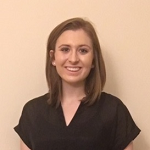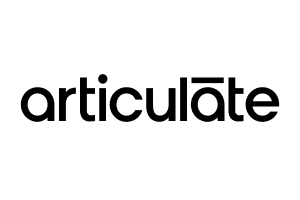Editor’s note: As we ended a difficult and unique year and entered a new one, the Training Industry editorial team asked learning leaders to write in with their reflections on 2020 and predictions for 2021. This series, “What’s Changed and What Hasn’t?: Taking Stock of 2020 and Planning for 2021,” is the result. Plus, don’t miss our infographic, “5 Tips for Turning 2020 Disarray Into 2021 Direction: Insights From Learning Leaders,” which shares insights from the series.
It would be an understatement to say that this year has been one for the record books. The COVID-19 pandemic has driven widespread levels of stress, anxiety and burnout in our personal and professional lives — which now exist within the four walls of our home.
Between remote work demands and virtual homeschooling, 29% of full-time remote employees have felt burned out at work “very often” or “always” during the COVID pandemic, as compared to just 18% before the pandemic, according to an Oct. 2020 Gallup survey. And with 42% of the U.S. labor force working from home as of June 2020, the risk of burnout is high — especially for professionals in the learning and development (L&D) industry, whose work has rapidly transitioned to the virtual space and is in higher demand than ever before.
According to LinkedIn’s 2020 “Workplace Learning Report,” 57% of learning and development professionals expect their companies to spend more on online learning. Yet, they have a less optimistic outlook on L&D than in previous years, according to Chief Learning Officer’s 2020 “State of the Industry” survey. So, even as demand for L&D work increases, many professionals are feeling uninspired and more pessimistic about the future of the industry.
The beginning of the year traditionally signals a time of reflection and replenishment, even in more normal circumstances. As you prepare for a new year of training, make sure to reflect on your career and your relationship with L&D. What about learning lights your fire? What drew you to the industry originally? What drives you to do your best work every day?
Below is a collection of end-of-year reflections from other L&D professionals to help you start thinking. Read their insights to reset, regroup and refocus your mindset for 2021.
Remember What Drives You
“I have two favorite parts of developing a program,” says Robin Pearl, MSIDT, a writer and instructional designer. “The first one comes during the initial brainstorm — when anything is possible and we just get better and more original ideas as we go. The other occurs during the pilot — whether in person or online — and we see people discovering, working with their peers and learning, firsthand. It brings me joy to see participants fully engaged, talking to one another, using the knowledge, resources and activities we’ve provided to discover the answers.”
“The best part is the execution and the post-evaluation,” says Rebekah Chang of RKC Consultants. “It is seeing the results from all the hard work come to life. When we exert so much brain power to understand requirements, plan, write, edit, test, meet crazy deadlines, revise and revise again, I look forward to seeing myself and the facilitators breathe life into the words and ideas we’ve created.”
“My favorite part is getting to learn the material myself. I need to be able to understand how something works before I can explain it to someone else,” says Catherine Godlewski of Write Mind, “so I’ve learned a little about a lot of things over the years, from health care to automotive to sales skills … even jewelry!”
Keep Primary Goals in Mind
“What I hope,” says Chang, “is that people leave a program with the ability to recognize a situation, stop and think. I want them to recall the tools they learned to make an intentional decision to do something different than what they’ve done before … Training, coaching and leading is about guiding people to be better versions of themselves and to make that growth self-sustaining.”
“My main goal when putting together a training program is figuring out what I’m not going to cover,” says David Zocchi of 1215 Training and Development. “It’s easy to say ‘a’ or ‘b’ is the priority for training and even easier to add the rest of the alphabet as you move through the stages of development. I want to make sure the most important things are given the time they deserve.”
Godlewski says, “When developing curriculum, my goal is to walk the learner through the content in a logical way so that it all makes sense. I always want someone to have that ‘lightbulb moment’ when it all comes together, which can only happen when you’ve set the stage properly.”
Rediscover Your Passion
“Why am I passionate about learning and development?” asks Pearl. “I think it’s the creativity — when we start, it’s a blank page. The possibilities are endless. We then have to figure out how to do what we want to do within the four walls of whatever budget we’re working with. Which, again, is all about creativity.”
“I believe my purpose in life is to make a difference,” says Marcia Oto, chief learning officer of The Apex Agency. “Life has given me this vehicle of training/learning/performance development to make an impact. I often say that there is a science and an art to doing great instructional design; and the ‘artist’ side of me feels so fortunate that I get to paint many canvases. Learning and development never gets boring, because every masterpiece — program — is different. My focus gets to be on bringing out the best of whatever I’m working on.”








